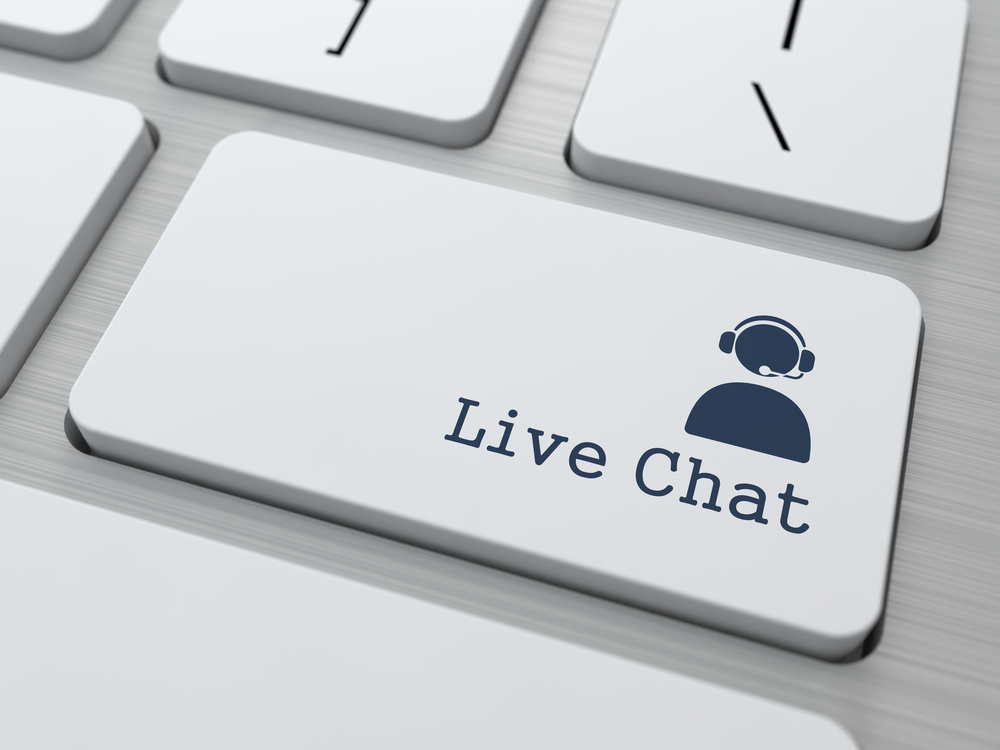Chatbots have become one of the most popular forms of artificial intelligence. According to estimates, 91% of Internet users use chatbots regularly. When you consider that 56% would prefer to send a message rather than call customer support, it makes perfect sense for businesses to jump on the trend of chatbots. Why aren’t they used by more businesses? They likely lack the know-how. This is changing today. Continue reading to get a complete guide on chatbot marketing. This will help you reduce costs and increase business.

This is Your Complete Guide to Chatbots and Marketing
This guide will cover all you need to learn about chatbots and marketing. We’ll go over what a chatbot is, the types of chatbots available, their benefits, and seven tips that can help you get started. Let’s get started!
What is a Chatbot
A chatbot is an automated computer program that engages with users. The chatbot can be programmed to do anything from handling customer service requests to helping users complete a purchase. Most chatbots are now programmed using keywords and AI to create conversational flows. They’re not quite human but they are getting closer.
Chatbot Types
Chatbots used for conversational commerce, marketing, and sales fall into two main categories: AI-based and rule-based. We’ll take a closer look at these two categories.
AI Chatbots
AI chatbots communicate with users using machine learning, emotion analysis, and natural language processing to create a conversational, natural, and humanistic experience. Chatbots can use machine learning to identify patterns and then “learn” to respond to different situations. Sentiment analysis allows chatbots to understand how users feel on an emotional level. Natural language processing allows chatbots then to mimic human speech patterns and understand the context.
AI chatbots need to have basic responses programmed in advance, but they will learn as they interact with users. They won’t require constant updates with new responses. Because they are constantly learning from their users, it is important to set parameters for the chatbots that will tell them what language is acceptable.
Rule Based Chatbots
Rule-based chatbots are different from their AI counterparts in that they rely on a script preprogrammed into the platform. These chatbots respond to questions based on “if/then statements” or conditional rules. The rules may be simple or complex. However, it is important to keep in mind that they are written and implemented when the chatbot was designed. The rules and responses must be manually updated based on data gathered from users.
Chatbots are more cost-effective for businesses because they don’t have to learn from the interactions of their users.
What is Chatbot Marketing?
Let’s look at chatbot marketing now that you have a better understanding of what they are and how to use them.
Chatbot marketing can be defined as the promotion and sale of products and services through chatbots. Chatbots can be used to increase sales, offer discounts or upsells, reduce response times and perform other repetitive marketing tasks. Chatbots can be used to deliver excellent customer service while allowing customer service agents to focus on more complex issues. Some companies combine chatbots and live chat to create a robust customer service solution.

Chatbot Marketing: Benefits and Uses
Chatbot marketing has many benefits. Chatbots allow you to automate processes, answer customer questions and solve problems more quickly, and save resources you can invest in other parts of your business. You could also be left behind as technology advances. Check out these top benefits of using chatbots in marketing.
Segment Traffic
Chatbots allow you to segment traffic instantly. A chatbot will help you segment contacts based on the questions they ask. It’s much easier to close sales when you have a better understanding of the user and their intent. You can also set up the chatbot so that users can buy immediately. This eliminates any back-and-forth between customers and your bot.
Generate Leads
Chatbots can also be a great tool to generate leads. You can use chatbots to collect information on shoppers leaving your store. Offer discounts to those returning or abandoning the store.
Increase Engagement
Chatbots are also great for engagement. Chatbots are available in a variety of messaging apps, including Facebook Messenger, WeChat, WhatsApp, and others.
Increase open rates
Chatbots are the clear winner when it comes to putting your message in front of your target audience. Their average open rate is between 70 and 90 percent. Chatbots have a higher open rate than emails, which averages between 15% and 25%.
Save Resources
How many agents do you need to hire to respond to customer questions 24/7? You probably can’t afford it. Chatbots are a great way to save money and time by automating the conversation and eliminating the need for an agent to answer each question. This allows you to save money and time while serving more customers and allowing your agents to focus on more complex issues.
Ordering and Payment Streamlined
Chatbots are a great way to speed up the whole purchasing process, especially for eCommerce businesses. Chatbots can be used to complete orders. By integrating with your payment gateway, customers won’t have to leave the bot to make their purchases. Any effort to reduce friction will increase sales, which is great for eCommerce.
Recover abandoned carts
Chatbots, as we have already mentioned briefly, can help recover carts. A shopper may abandon their cart for a variety of reasons. A chatbot that can reconnect with the customer, find out why they abandoned their cart, provide answers to questions, and offer a discount could help you win back lost sales.
Respond Instantly
Chatbots are popular with consumers and businesses because they respond quickly to queries. Chatbots’ ability to answer simple complex questions quickly is lauded by many, especially when you consider the average email response time of 10 hours. A faster response to questions from customers can increase sales, improve affinity and build trust.

7 Chatbot marketing tips to get you started
You’re now ready to dive into the world of chatbots and marketing. Great! It’s really easy to start. Depending on your needs, there are many chatbot marketing software tools available today that will guide you through the creation of an AI or rule-based chatbot. We’ll also cover seven more chatbot tips, to help you improve your strategy.
1. Chatbots are a great marketing tool.
You may want to consider a tool that allows you to create a bot without any coding knowledge. When comparing chatbot platforms, here are some things to look for:
- Easily deployable on multiple marketing channels
- Product Integration
- Tracking links and goals
- You can choose between AI and rule-based alternatives
Here are a few of the chatbot marketing platforms we love:
EBI.AI
EBI.AI’s SaaS for creating AI assistants and managing them is approved for use by regulated industries. This platform allows you to launch an AI assistant online in just minutes, or have them do it for you.
Why EBI.AI?
- All AI assistants include NLP
- Machine learning models are built when better models do not exist
- Supports multiple languages and channels
- Provides standard enterprise security and accountability
- Live chat is the fastest way to get complex issues handled by the best agent available.
- Integrates with virtually all business systems
- Keeps track of customer preferences and details
- Pre-built reporting dashboards
- Built-in response store
- Supports video, images, carousels, and links.
- You can use the free tier for as long as you like without having to give credit card information.
Chatfuel
Chatfuel will use NLP to recognize and understand key phrases and send predefined responses. Chatfuel allows you to create a chatbot that can be used for a variety of purposes, including customer service advisors, event assistants, avatars, and more.
Why Chatfuel
- Drip sequences triggered messages
- Artificial Intelligence for answering FAQs
- Attributes for segmenting your audience
- Custom integrations for Shopify, Facebook Shops, and Google Sheets
- Free chatbot templates for you to get started
MobileMonkey
MobileMonkey allows you to create Facebook Messenger chatbots. You can also engage lead generation tools such as broadcast messages, drip campaigns, chat blasts, and list building. Plus, automation features!
Why MobileMonkey
- Supports multiple platforms
- Included is a unified chat inbox
- Automated Customer Satisfaction Surveys
2. Start Small
You might be tempted, once you have a marketing chatbot tool in place, to create a bot that can handle everything you could think of. Start small and take a deep breath. This way, you’re less likely to get overwhelmed or disappointed when your chatbot does not perform as you expect. Begin with a chatbot that welcomes your visitors. It’s not flashy but it does add a friendly element to your website.
3. Tackle Your FAQs
You probably have a long list of questions that you are asked constantly if you’ve worked in business for a while. Why not build a chatbot that can answer your FAQs? You can gather questions from all departments in your business (sales and marketing, customer service, etc.). Build a chatbot to answer those questions. Imagine how much time and effort you would save by not having to answer the same questions over and over again!
4. Create a Discount Chatbot
Everyone loves a good discount, right?! Set up a chatbot that offers users a discount for certain behaviors. (Abandoned shopping carts anyone?) This is a good way to increase revenue and recover sales that may have been lost. Chatbots have been shown to reduce cart abandonment by 20-30%, according to some studies. What would you do with an increase in revenue of 20%-30%?
5. Grab the Low-Hanging Fruit
Analyze your website’s traffic and discover when visitors leave your site or fall out of the sales funnel. You can use a chatbot if you know exactly when people are leaving your site. You could have a chatbot appear on your pricing page (to answer questions and prove the value of an investment) or a feature page, to ask visitors about the functionality they are looking for. You can ask your visitors which solution they are currently using, and compare it to yours.
6. Humanize and Personalize Your Chatbot
If you want to make your chatbots more popular, don’t use a robotic or stilted voice. (Unless that is what you are going for and it works for your audience). You don’t need to have your chatbot sound like a human to your visitors, but you should make sure its “voice” sounds human. Personalizing chatbot interactions is also a good idea. It may be necessary to integrate your chatbot into your Email Marketing Platform to gather basic information about your users and personalize the chatbot’s experience. This leads us…
7. Integrate With Email Marketing
Email Marketing is a great way to increase your ROI. Reports place it between 3500% and 4400%. This means that for every dollar you spend on email, you can expect to receive between $35 and $44 in revenue. Integrate your email and chatbot marketing efforts to streamline your process.
Use chatbot marketing to delight and engage your audience

It’s not for every business, but it is worth a shot. Many chatbot builders offer free plans or trials. If your audience doesn’t like it, stop using it. If your audience enjoys engaging with your bots, however, you will be well on your way to increasing your sales timeline and lead generation. You will also build trust and brand loyalty, as well as boost your revenue.